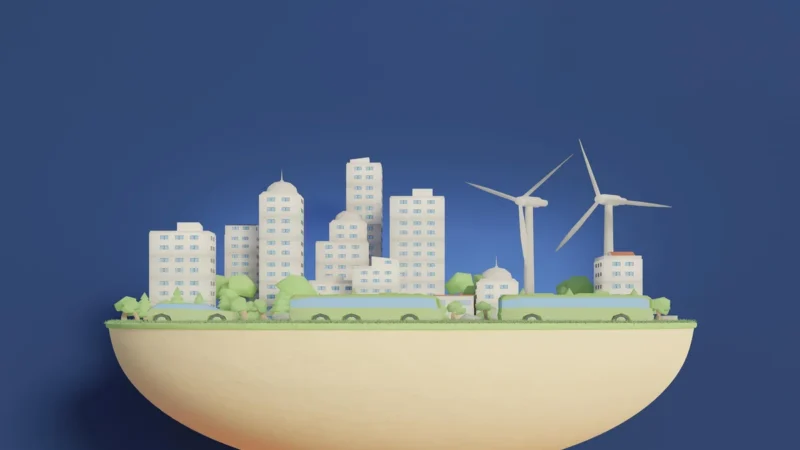Environmental Impact:10 Strategies for Global Warming Prevention

The Earth is facing a critical environmental challenge in the form of global warming, largely driven by human activities such as the burning of fossil fuels, deforestation, and industrial processes. The consequences of unchecked global warming are far-reaching, from rising temperatures to more frequent extreme weather events. In this article, we will delve into ten impactful strategies that can play a pivotal role in preventing and mitigating global warming.
1.Transitioning to Renewable Energy Sources
Shifting from fossil fuels to renewable energy sources like solar power and wind energy is one of the most effective ways to reduce greenhouse gas emissions. These sources produce little to no carbon emissions, making them a sustainable alternative to coal, oil, and natural gas.
2.Energy Efficiency Improvements
Enhancing energy efficiency in buildings, transportation, and industrial processes helps reduce overall energy consumption and associated emissions. This can be achieved through technologies like LED lighting, smart thermostats, and efficient appliances.
3.Afforestation and Reforestation
Planting trees and restoring forests play a crucial role in absorbing carbon dioxide from the atmosphere and promoting biodiversity. These natural carbon sinks help offset emissions and create resilient ecosystems.
4.Sustainable Agriculture and Reduced Deforestation
Adopting sustainable agricultural practices that prioritize soil health and reduce the need for deforestation helps limit carbon emissions from land-use changes and agricultural activities.
5.Electric Vehicle Adoption
Transitioning to electric vehicles reduces emissions from the transportation sector, which is a significant contributor to global warming. EVs produce zero tailpipe emissions and are becoming increasingly accessible.
6.Carbon Capture and Storage (CCS)
CCS involves capturing carbon emissions from industries and power plants and storing them underground, preventing their release into the atmosphere.
7.Sustainable Waste Management
Implementing efficient waste management systems, including recycling and composting, reduces methane emissions from landfills and limits the environmental impact of waste.
8.Promoting Circular Economy
Encouraging a circular economy model, where products are reused, repaired, and recycled, reduces the need for new resource extraction and decreases emissions associated with production.
9.International Collaboration and Policy
Global warming is a shared challenge that requires international collaboration. Implementing and enforcing policies that promote emission reductions can have a substantial impact on a global scale.
10.Individual Action and Awareness
Raising awareness about the impacts of global warming and encouraging individuals to adopt sustainable practices can contribute to a collective effort in preventing further environmental degradation.
we can conclude this, Addressing global warming is an urgent and multifaceted challenge that demands comprehensive action at various levels. By embracing these ten strategies, from transitioning to renewable energy to advocating for international cooperation, we can collectively work towards a more sustainable and habitable planet for current and future generations. It’s imperative that individuals, governments, and industries unite to combat global warming and secure a healthier and more resilient future.
FAQs
1.What is global warming and why is it a concern?
Global warming refers to the long-term increase in Earth’s average surface temperature due to the buildup of greenhouse gases in the atmosphere, primarily caused by human activities. These gases trap heat, leading to various negative impacts such as rising sea levels, more frequent heatwaves, and disruptions to ecosystems.
2.How can renewable energy help combat global warming?
Renewable energy sources like solar and wind power produce minimal greenhouse gas emissions compared to fossil fuels. By transitioning to these cleaner energy sources, we can significantly reduce our carbon footprint and decrease the amount of harmful emissions released into the atmosphere.
3.How does afforestation contribute to global warming prevention?
Afforestation involves planting new forests, while reforestation focuses on restoring existing ones. Trees act as natural carbon sinks, absorbing carbon dioxide from the atmosphere through photosynthesis. By expanding and restoring forests, we enhance the planet’s capacity to sequester carbon and combat global warming.
4.What role do electric vehicles (EVs) play in reducing global warming?
Electric vehicles (EVs) produce zero tailpipe emissions since they run on electricity instead of fossil fuels. By adopting EVs, we can reduce air pollution and decrease the transportation sector’s contribution to global warming. Additionally, as renewable energy sources grow, the environmental benefits of EVs further increase.
5.How can individuals contribute to global warming prevention?
Individuals can make a significant impact by adopting sustainable practices in their daily lives. This includes reducing energy consumption, minimizing waste through recycling and composting, supporting eco-friendly products, and advocating for policies that promote environmental protection. Small changes collectively add up to a substantial positive effect on global warming prevention.


